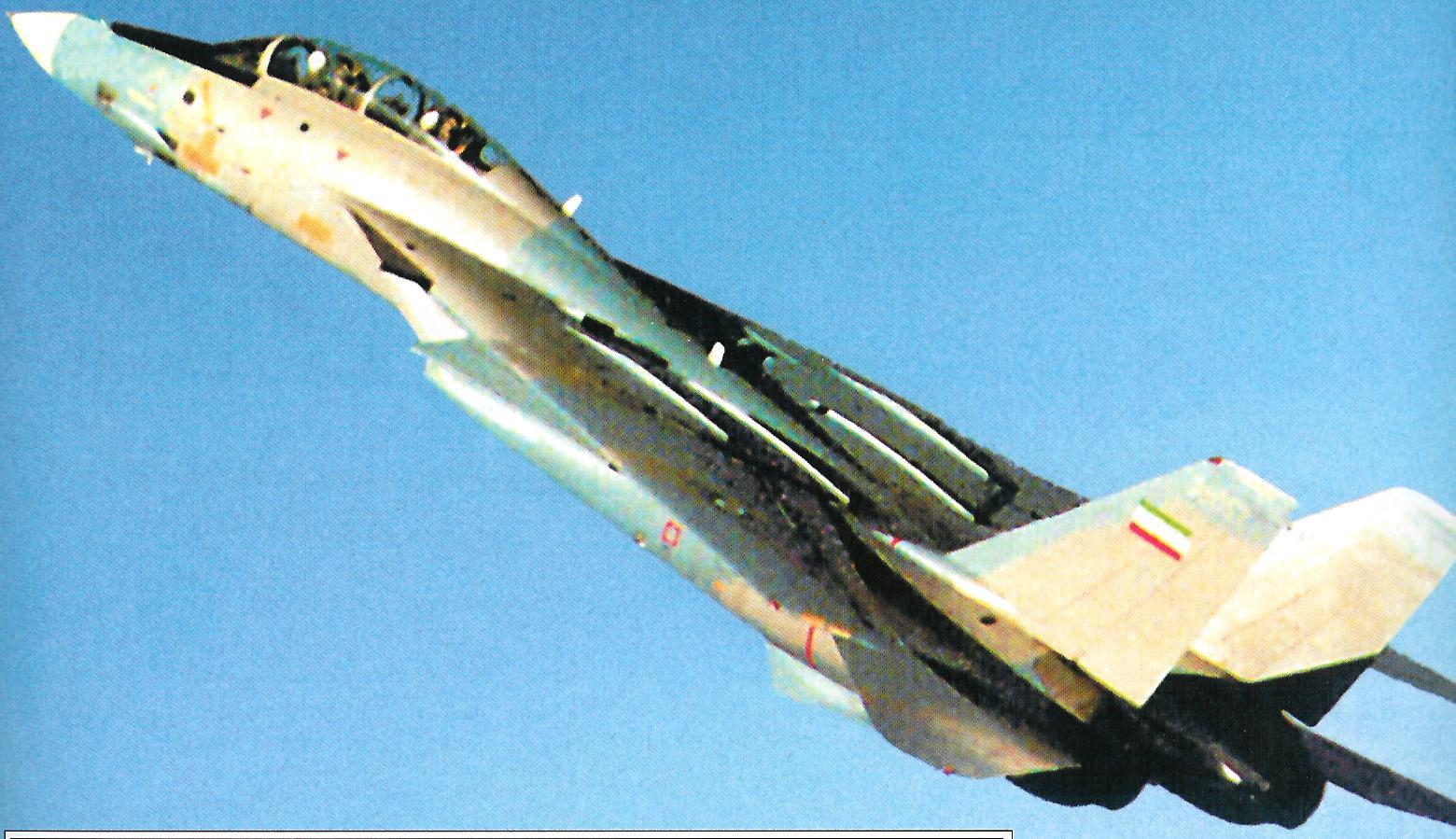Kindly note that excepting two photos, none of the other images and their accompanying descriptions appear in the original Business Insider posting. The two photos that appear in the original Business Insider posting have had their descriptions edited in the version printed below. The text version printed below has also been slightly edited.
======================================================================
In the opening days of the Iran-Iraq War, Iranian F-14 Tomcats took their toll on the Iraqi Air Force, downing fighters and bombers alike.
One day in January 1981, Iranian F-14 pilot Asadullah Adeli responded to what he thought were three MiG-23s headed toward Kharg Island in the Persian Gulf.
So he shot the MiG in the middle of their formation with and American-built Phoenix missile.
A lot of crazy sh*t happened in the Iran-Iraq War. The backbone of the Iranian Air Force at the time was the beloved F-14 Tomcat, a plane the Iranians still fly. Purchased by the Shah of Iran before the rise of the Islamic Republic, Iran’s Air Force consisted of dozens of the two-seat fighter aircraft, which gave them an edge in the air war against neighboring Iraq.
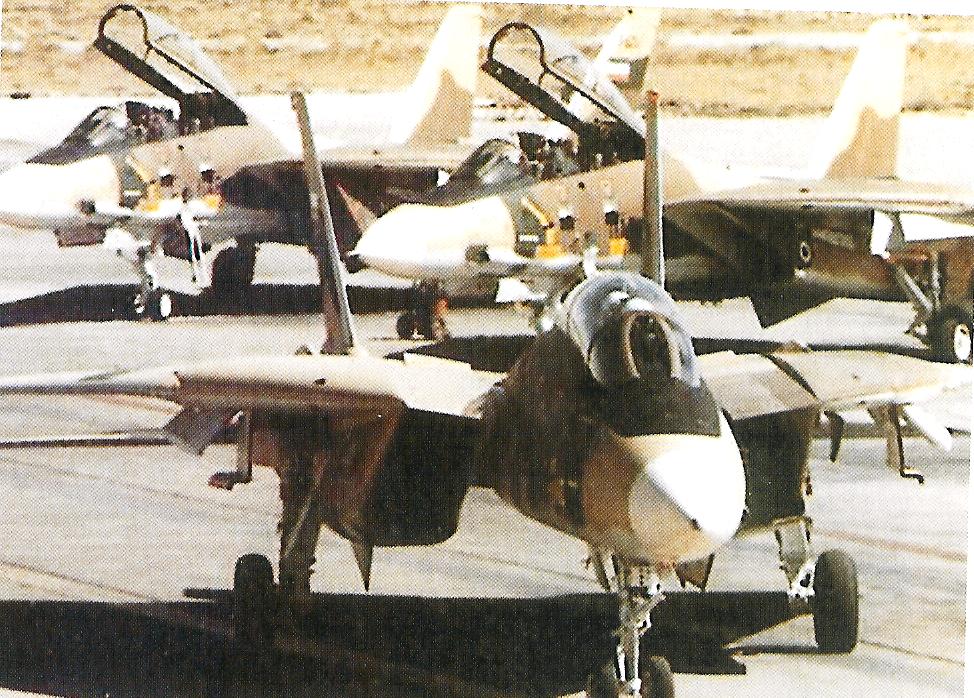
Freshly delivered F-14 Tomcats at the Iranian airbase of Khatami before the revolution (Cooper & Bishop, 2004, Color plate 3). For more see here …
But tech can only take you so far. And it was the skills of Iranian pilots that allowed the IRIAF to claim three kills with one missile.
Iranians are really good behind the stick of the Tomcat. In fact, the highest scoring ace in a Tomcat is an Iranian named Jalil Zandi. According to the U.S. Air Force, Zandi is credited with 11 kills in an F-14 — an amazing achievement for any fighter pilot. But he was in good company during the Iran-Iraq War because his fellow pilots were keeping the skies clear of any offending Iraqi aircraft.
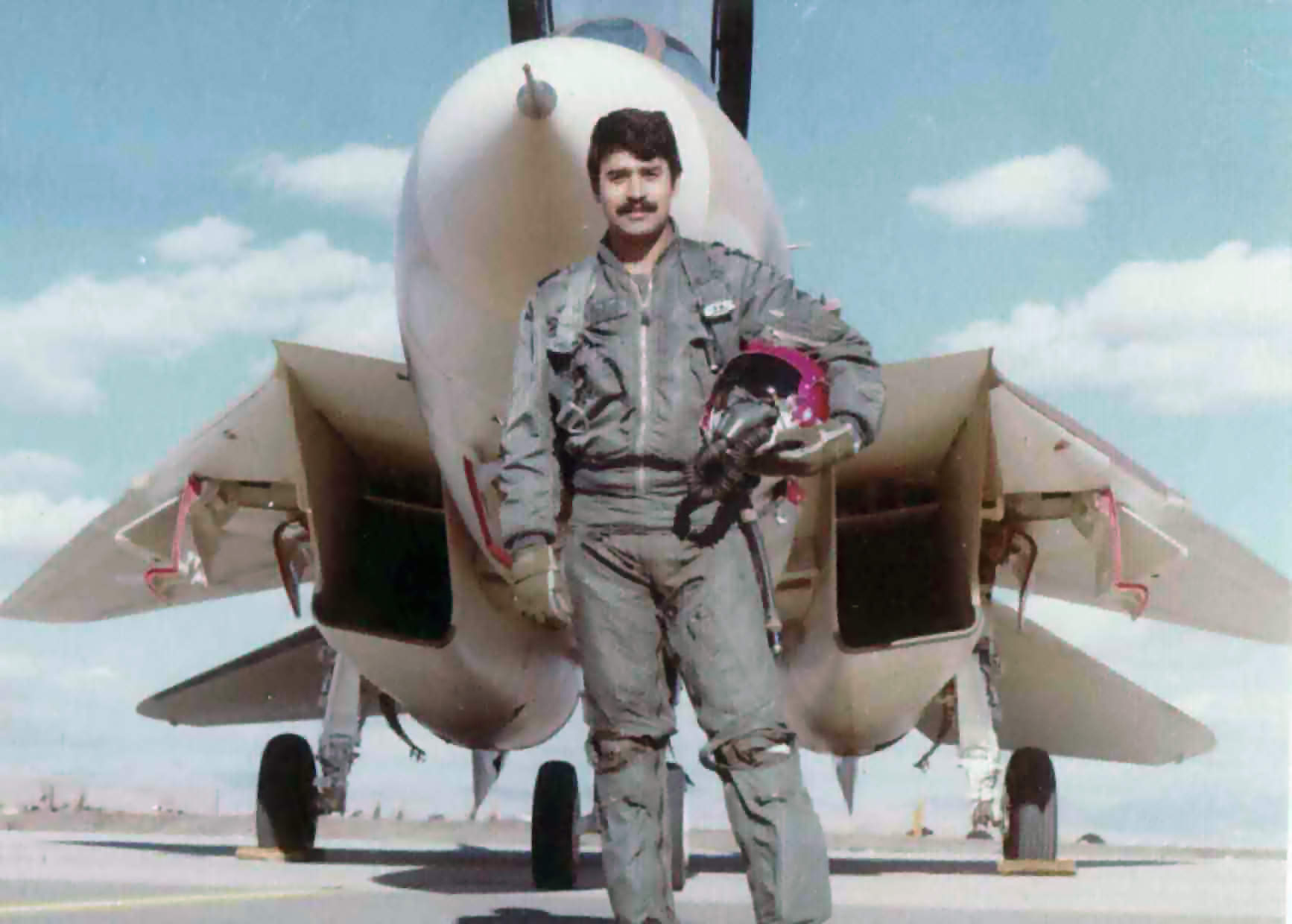
Jalil Zandi posing in front of his Grumman F-14A Tomcat during the Iran-Iraq War (1980-1988). Zandi is the highest scoring air to air combat ace with the F-14 (Photo Source: Public Domain).
The Iran-Iraq War was in full stalemate by the end of 1981 and the fighting on the ground was so brutal, it might literally have been illegal. Iraq invaded Iran in 1980 for a number of reasons, mostly to take advantage of the political instability in the country in the aftermath of the revolution and to annex the Iranian province of Khuzestan.
Before the Iraqi ground troops crossed the border, however, Saddam’s air forces attempted to destroy the Iranian Air Force while it was still on the ground. They missed and it cost them big time. From that point on, Iraqi MiG and Sukhoi fighters were flying the highway to the danger zone every time they flew into Iran – Tomcats were on patrol.
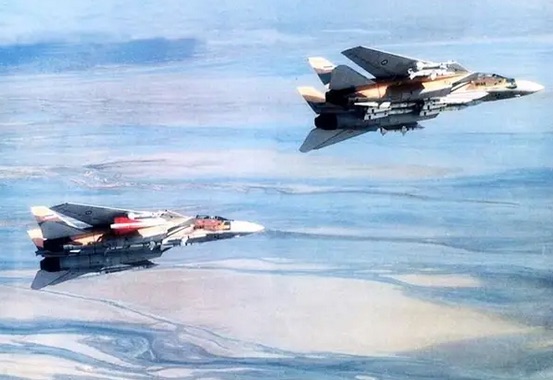
Iranian F-14A Tomcat fighters on patrol (Photo Source: Blake Stilwell in Business Insider and Public Domain). The aircraft system’s avionics and weapons systems have been systematically overhauled within Iran over the years with many weapons and electronic systems produced indigenous within the country.
In the opening days of the war, Tomcats took their toll on the Iraqi Air Force, downing fighters and bombers alike. Their most deadly weapons, Phoenix missiles, carried an explosive payload that was much larger than other anti-aircraft missiles. They were designed to take down Soviet-built Tupolev bomber aircraft, the same kind the Iraqis were trying to fly over Tehran.

Iran’s Sattar-1 laser-guided air-to-ground missile designed after the Iran-Iraq war. This is believed to have borrowed some features from the Phoenix air to air missile. The Phoenix downed large numbers of Iraqi air force aircraft during the Iran-Iraq war, including those flown by mercenary pilots (Picture source: The Arkenstone). For more see here …
By 1981, the war on the ground had devolved into an exchange of chemical weapons against human wave attacks. The war was just as brutal in the air, but the Tomcats gave Iran a decisive edge. A single F-14 in the area was enough for Iraqi pilots to scatter and head for home. What happened on Jan. 7, 1981 was a clear example of why.
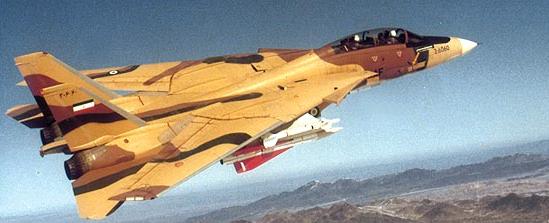
An Iranian F-14 Tomcat shows off a modified HAWK missile. The integration of the huge surface-to-air Hawk missile into the F-14 weapon system as an air-to-air missile was a surprising feat of ingenuity. When the pictures of Iranian Tomcats carrying the HAWK were released for the first time, most Western media had been claiming for years that Iran’s F-14 fleet was grounded due to lack of spare parts and qualified technicians to maintain them. Those pictures showed that the Iranians had become very good at reverse engineering Western systems without any assistance, to the point that they not only could keep the Tomcats airworthy. This also shows that the iranians are capable of coming up with Indigenous and imaginative solutions in order to use all weapons in their arsenal. (Picture source: Mehr News).
Iranian pilot Asadullah Adeli and his Radar Intercept Officer Mohammed Masbough responded to reports of unidentified aircraft headed toward Kharg Island in the Persian Gulf.

A two-phase painting of a dogfight between an Iranian Tomcat and an Iraqi MIG-21. At left the two adversaries are locked in combat and maneuvers and at right the Tomcat kills the MIG-21 (Picture source: Uskowi on Iran). It was on November 20, 1982 when a Tomcat like the one above fired its deadly Phoenix missiles into Iraqi MIG-21 and MIG-23 aircraft escorting a VIP Mi-8 helicopter ferrying Iraqi Generals Abdul Jabbar Mohsen (Iraqi Fourth Army Corps) and General Maher Abdul Rasheed (Iraqi Third Army Corps). Three Iraqi combat aircraft were immediately blown to pieces . Luckily for the Generals, their helicopter had not been detected by the Tomcat’s AWG-9 radar – otherwise they most certainly would have been blotted out of the sky by one of the Tomcat’s Phoenix missiles. General’s Mohsen and Rasheed had indeed had a “near-death experience”. For more see here …
The Tomcat determined the intruder was actually three Iraqi MiG-23s, presumably headed toward an oil rig near the island. Iranian ground radar couldn’t see all three, but authorized Adeli and Masbough to engage the MiGs anyway. As recalled by Adeli:
“They were flying really low … Even though it was night, they were flying at around 2,000 feet.“
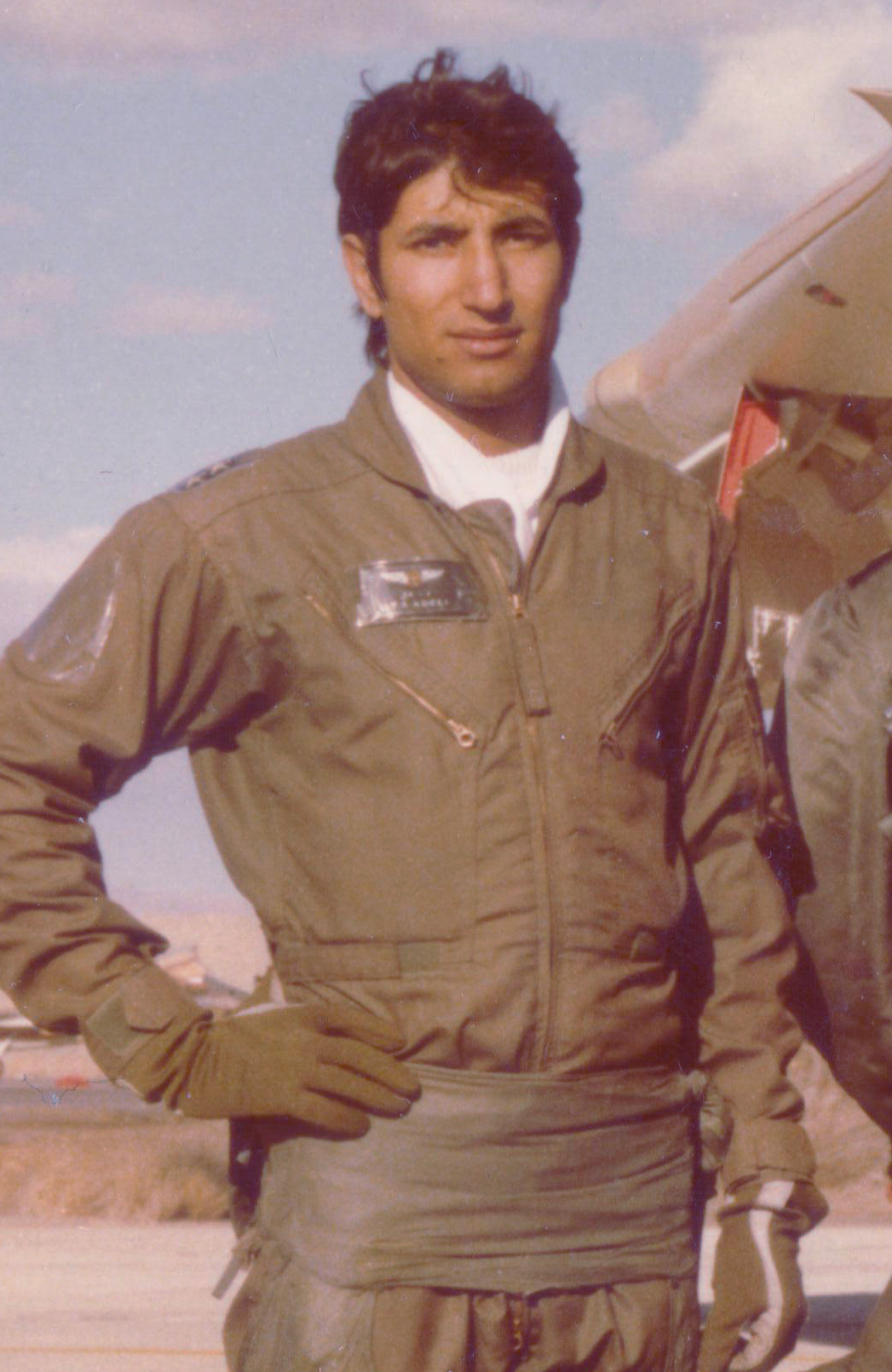
Asadollah Adeli during the Iran-Iraq war of 1980-1988 (Photo Source: Public Domain). As noted by Stilwell in reference to Iranian Tomcat pilots “You can’t slap sanctions on style, apparently”.
Masbough told him to target the one in the middle, just hoping to damage the other two enough that they might break off. That’s almost what happened. The American-built Phoenix missile’s explosive delivery was so powerful, it downed all three enemy aircraft. The wreckage of all three MiGs was found on Kharg Island the next day.
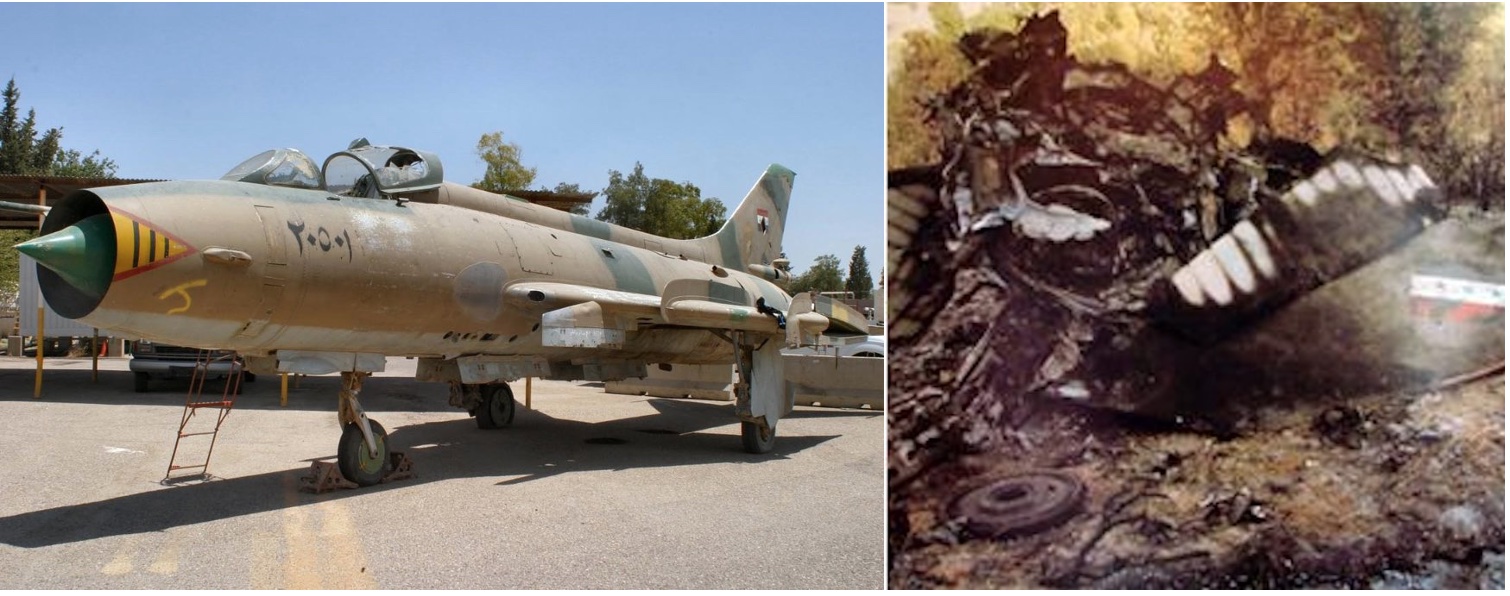
An Iraqi air force Su-22 (left – Picture source: Flying Tigers: The Aeroplane People) and a Su-22M shot down near Baneh in northwest Iran on October 16, 1987 (right – picture source: Farzad Bishop). The doomed Sukhoi was first targeted for termination by an Iranian Tomcat forcing the Iraqi jet to dive extremely low – the Su-22 did this to avoid being blasted by the Tomcat’s Phoenix missile. This only led the doomed jet into the sights of Iranian 35mm anti-aircraft guns which shot down the aircraft.

